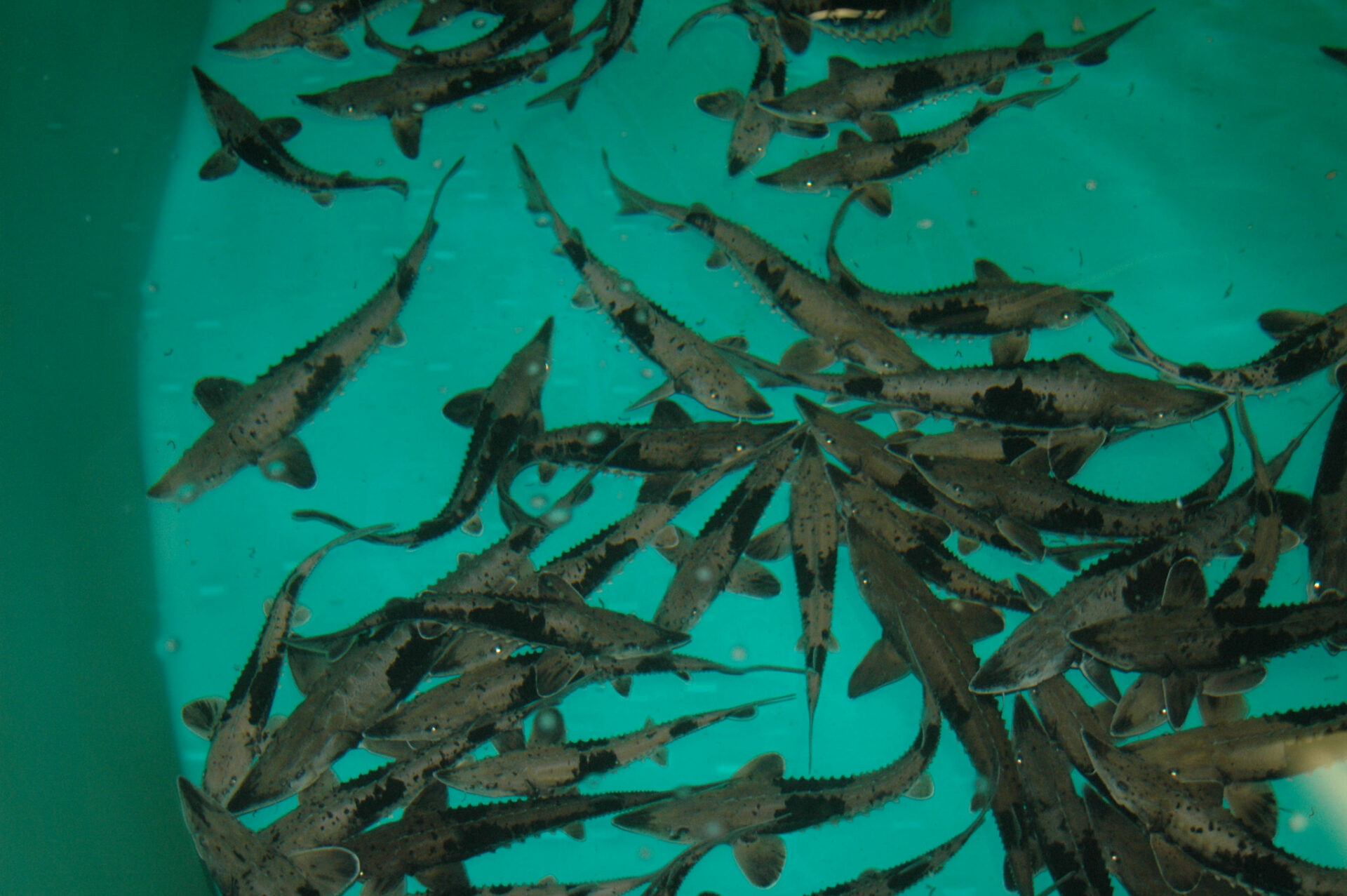Lake sturgeon, an ancient fish native to the Great Lakes region, can grow to be more than six feet long, 200 pounds, and live more than 100 years. This “dinosaur fish” has teetered on the brink of extinction since the late 19th century. But in Wisconsin, careful management over the last 100 years has allowed one population to thrive. According to fossil records, lake sturgeon have been on Earth for at least 150 million years and their biology has remained essentially unchanged. Several of their features harken back to the early evolution of fish. Their skeletons are made of cartilage and their backbones are notochords, a precursor to the spine of most fish caught for food. Sturgeon’s tail fins are shark-like in appearance and their bodies are covered in five rows of pinched cartilage called scutes.
Learn more about this ancient survivor as a librarian and two ichthyologists dissect a juvenile specimen and then test your knowledge with our activity sheet.
Test your knowledge!
- Activity sheet in Word, PDF (answer key)
- Hoja de actividades in Word, PDF (hoya de repuestos)
Looking to explore further?
- Visit our sturgeon story map
- Listen to sturgeon sound
- Check out a digital art + science exhibit
- Learn how the WDNR manages the fishery
- Read a description from National Geographic
- Learn more from the US Fish and Wildlife Service
- Watch some fun video
- Lake Sturgeon: Dinosaurs of the Great Lakes (2011, 26 min)
- Stocking lake sturgeon in the Ontonagon River (2020, 20 min)
- Lake Sturgeon – Great Lakes Now Virtual Field Trip (2019, 5 min)
For educators
Wisconsin Model Academic Standard Learning Priorities
SCI.LS1.A Structure and Function
SCI.LS1.D Information Processing
Great Lakes Literacy Principles
5. The Great Lakes support a broad diversity of life and ecosystems.




